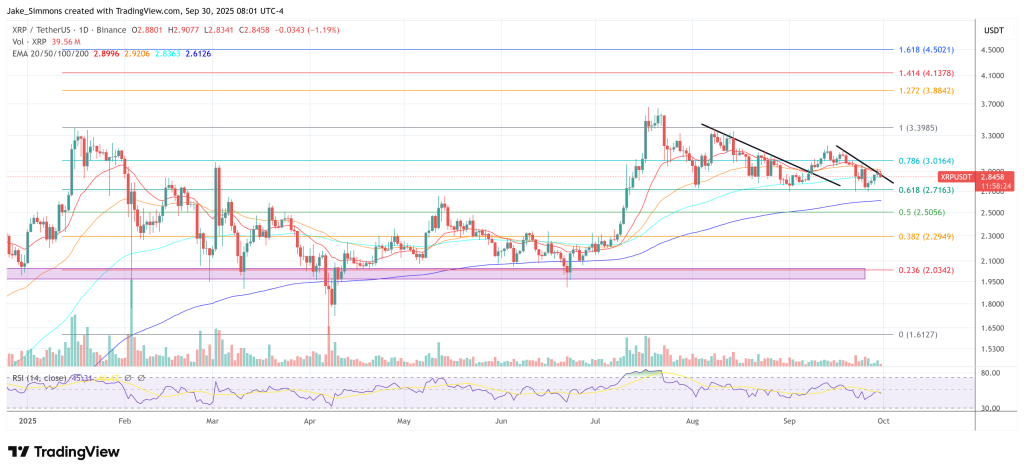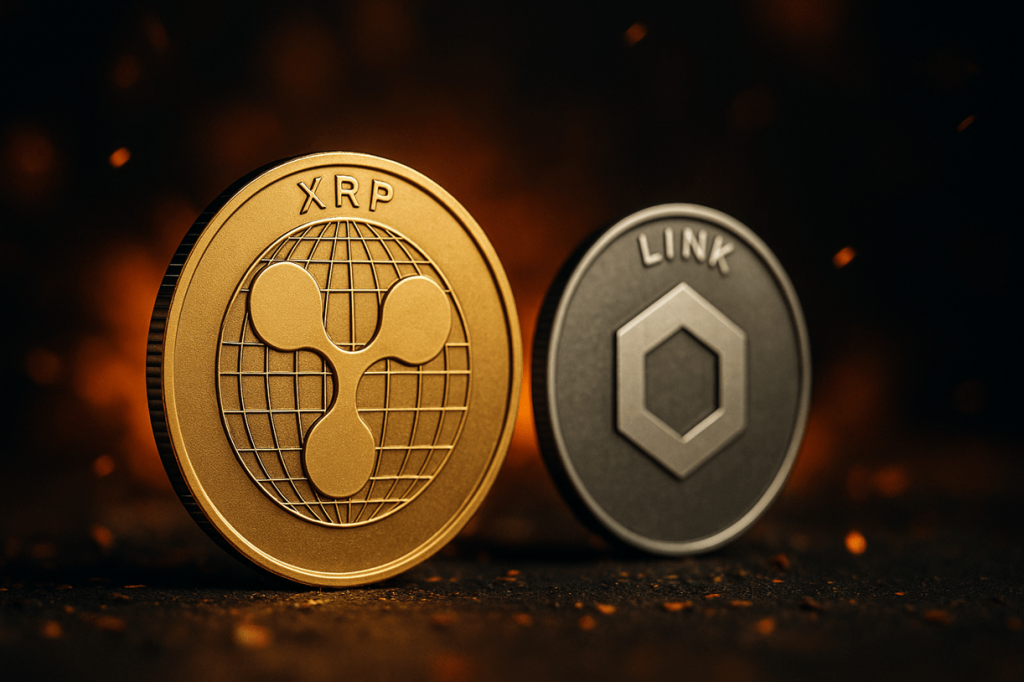A fresh match of tribal sparring through token ratings occurred in X after Coinroutes founder Dave Weisberger asked why XRP trades at more than 10 times the links on Chainlink despite his well-known role in the financial market infrastructure. Following the announcement on Swift's Sibos, the announcement that it would launch a blockchain-based ledger, it quickly crystallized two very different theories of “value capture” in cryptography.
Weisberger set the stage by directly challenging the XRP community. “If someone from XRP Army (@XRPMickle) has an actual partnership with Swift and a clear path to share with token holders, can XRP explain the value of the link more than ten times the value of the link?” ChainLink and Swift “we worked together across a large number of initiatives” to connect financial institutions to the blockchain using existing infrastructure and standards.
Why is XRP “value” than links?
What followed was the same part of the discussion and cultural conflicts of token economics. Wiseberger, who later revealed “to be clear, I'm holding both,” added that he thinks “The XRP Bulls are paranoid in their appeal.” His framing invited two lines of replies: a discussion of “volume and adoption” and a discussion of “different issues, different TAMs.”
Related readings
At the forefront of data, one respondent @Baggins_CC said, “XRP tokens have a market capitalization of $172 billion and a market capitalization of $1.4 billion (1/10). Looking at the last 24 hours, XRPL processed 4.9B revenue compared to when they added revenue compared to the link. They come to real-world adoption.”
Weisberger pushed back with a counterexample aimed at separating throughput from token values: “If TRX handles USDTs of 500 times more than 500 times in value, what is the XRPL value for XRPL? Thrust: Raw payment or messaging volumes are not automatically converted to superior price performance of tokens or uppercase.
The second line of more structural reactions came from former Ripple engineer Matt Hamilton. In a brief distinction, he writes: “It makes no sense to try to compare its value. Links are protocols, XRP ledgers are real networks. XRP is the native asset of that entire network. Links are tokens used within the link protocol.” In other words, the two assets occupy different positions in the technology stack. XRP is the L1 base tier currency that provides ledger security, fee payments and liquidity. A link is an Oracle protocol work token above the execution layer to provide data and cross-chain services.
The discussion of that stack position was amplified by XRP Army member Ripple Bull Winkle. He reframed the comparisons in terms of addressable markets. stablecoins are for cross-border Oracle revenue.
Related readings
Other replies aimed at the investor's story itself. When commenters criticized Wiseberger's “lazy questions,” he returned with a reminder that many “were spoken to XRP based on Swift despite no clear token economy or definitive use cases.”
Ultimately, the thread doesn't “prove” why XRP is worth ten times more than a link, or vice versa. Instead, it exposes the basic split of the crypto investment framework. One camp prioritizes the fundamental layer of native asset economics and its role as a neutral settlement media. The other is prioritizing middleware that generates revenue essential to a financial system where services are tokenized.
Swift News has reset expectations about how legacy rails interface with blockchain, so the central question of the market remains unchanged. How do you verify the designs that actually trap values and how those mechanics validate real-world usage to the persistent demand of the token itself? On that score, the argument is far from being resolved.
At the time of press, the XRP traded for $2.84.

Featured images created with dall.e, charts on tradingview.com

